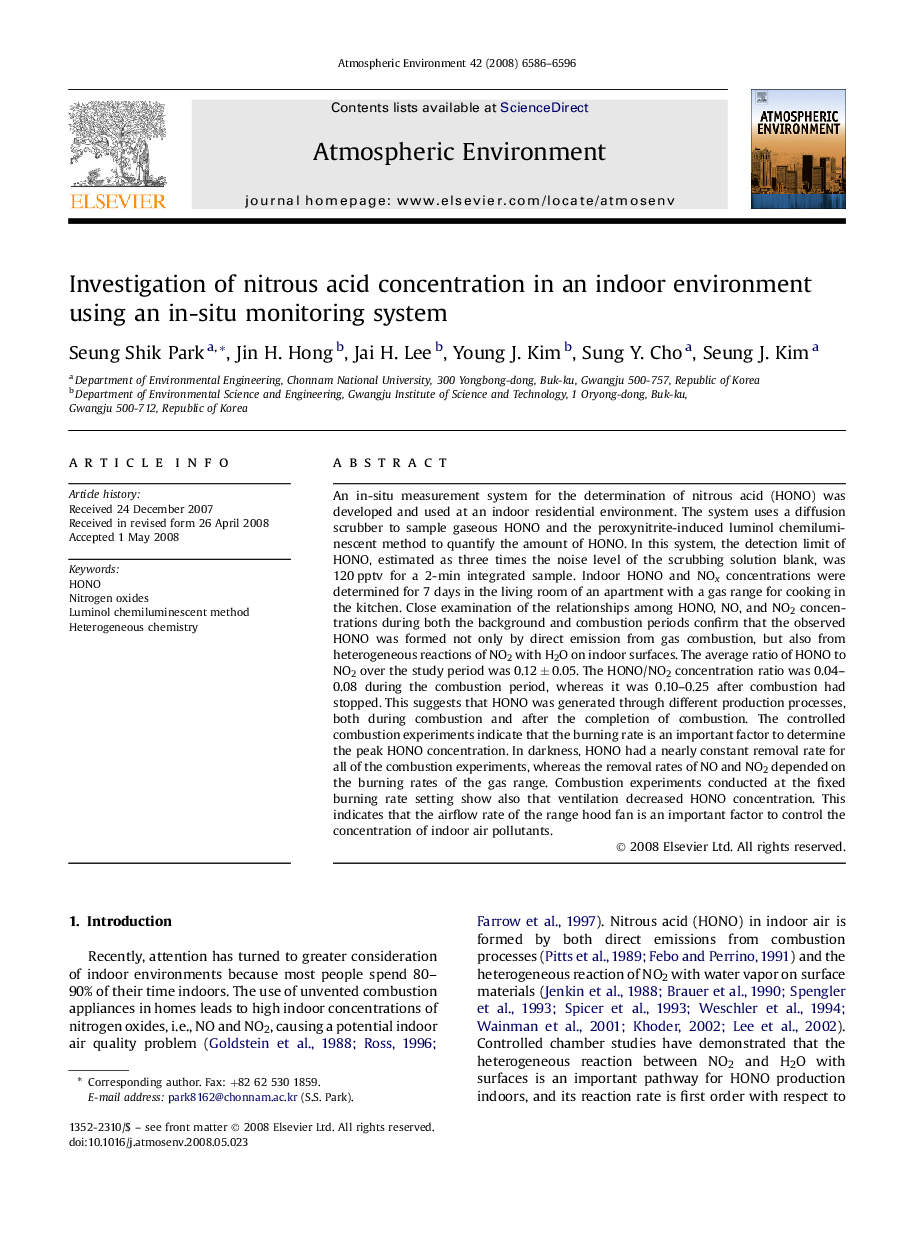| Article ID | Journal | Published Year | Pages | File Type |
|---|---|---|---|---|
| 4442593 | Atmospheric Environment | 2008 | 11 Pages |
An in-situ measurement system for the determination of nitrous acid (HONO) was developed and used at an indoor residential environment. The system uses a diffusion scrubber to sample gaseous HONO and the peroxynitrite-induced luminol chemiluminescent method to quantify the amount of HONO. In this system, the detection limit of HONO, estimated as three times the noise level of the scrubbing solution blank, was 120 pptv for a 2-min integrated sample. Indoor HONO and NOx concentrations were determined for 7 days in the living room of an apartment with a gas range for cooking in the kitchen. Close examination of the relationships among HONO, NO, and NO2 concentrations during both the background and combustion periods confirm that the observed HONO was formed not only by direct emission from gas combustion, but also from heterogeneous reactions of NO2 with H2O on indoor surfaces. The average ratio of HONO to NO2 over the study period was 0.12 ± 0.05. The HONO/NO2 concentration ratio was 0.04–0.08 during the combustion period, whereas it was 0.10–0.25 after combustion had stopped. This suggests that HONO was generated through different production processes, both during combustion and after the completion of combustion. The controlled combustion experiments indicate that the burning rate is an important factor to determine the peak HONO concentration. In darkness, HONO had a nearly constant removal rate for all of the combustion experiments, whereas the removal rates of NO and NO2 depended on the burning rates of the gas range. Combustion experiments conducted at the fixed burning rate setting show also that ventilation decreased HONO concentration. This indicates that the airflow rate of the range hood fan is an important factor to control the concentration of indoor air pollutants.
